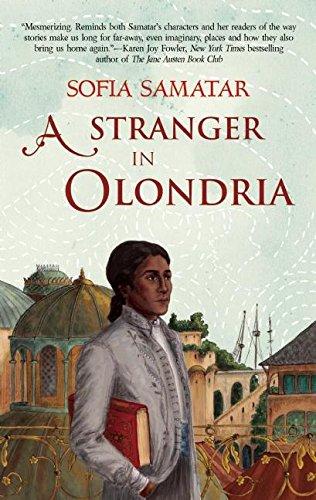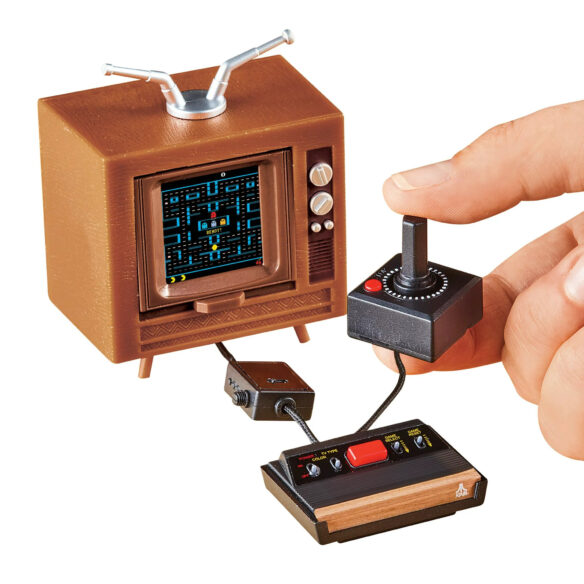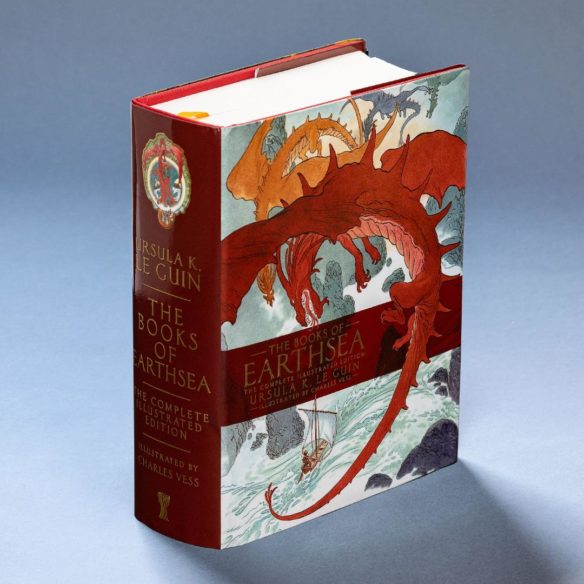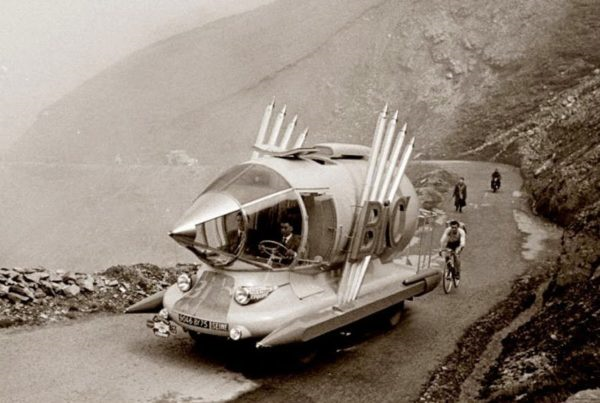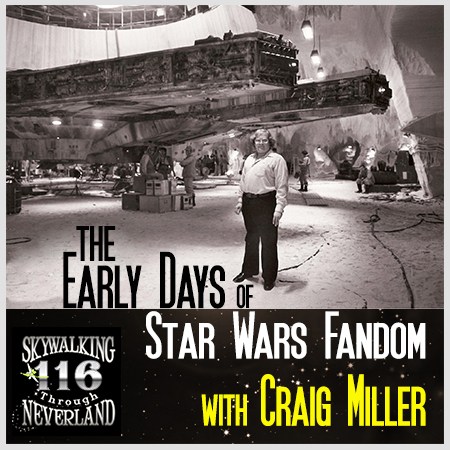(1) ELGIN AWARDS NEWS. Members of the Science Fiction & Fantasy Poetry Association (SFPA) have until May 31 to nominate books for the 2025 Elgin Awards.
The Elgin Awards, named for SFPA founder Suzette Haden Elgin, are presented annually by SFPA for books published in the preceding two years in two categories, Chapbook and Book.
2025 Elgin Chair: Juleigh Howard-HobsonOnly books of speculative poetry first published during 2023 and 2024 are eligible. Books containing fiction as well as poetry are not eligible. More than half of the poems in the book must be unequivocally speculative as determined by Chair. Translations into English are eligible.
(2) PETER DAVID FUNDRAISER. [Item by Daniel Dern.] Peter David, in addition to having written many fine issues and runs of comics (Hulk, Young Justice, Spider-Man, Supergirl, etc.), and sff (including Star Trek novels), and TV episodes (including Babylon 5) and games, wrote a wonderful, informed-and-informative opinion column “But I Digress…” for the Comic Buyers Guide (which, I see, there are two book collections of).
Now he (and his family) need our help! I see that the GoFundMe has already done remarkably…but it hasn’t yet reached its goal. As of 6:30PM ET today (Sunday, March 16), it’s reached around 55% of its goal.
Here’s the link — “Help Peter David” at GoFundMe.
And here’s the CBR.com article where I saw it – “Comics Icon Peter David Needs Our Help” — with (my) caveat that this article’s link to the GoFundMe has got lots of tracking/etc stuff in their link… I’m planning to use the link I provided just above to make my own donation, later tonight.
(3) CLIPPING STILL WORKING IN SFF. From the Guardian: “Daveed Diggs’ sci-fi rap trio Clipping: ‘We are at war all the time. It’s one of the great tricks of capitalism’”.
As a child, Daveed Diggs and his schoolfriend William Hutson drew pictures inspired by the space-age album covers of funk legends Parliament, filled with gleaming UFOs and eccentric interplanetary travellers. Diggs would grow up to become an actor, winning a Tony award as the first person to play the roles of Marquis de Lafayette and Thomas Jefferson in Hamilton. He’s since voiced Sebastian the crab in The Little Mermaid’s live-action remake and appeared in Nickel Boys, which was nominated twice at this year’s Oscars. But away from Hollywood and Broadway, he’s still dreaming up fantastical sci-fi worlds with Hutson – now through one of the most imaginative, harrowing projects in underground rap.
Along with Hutson’s college roommate Jonathan Snipes – who had a similar childhood experience, inspired by the otherworldly paintings adorning classical albums – the friends formed Clipping in Los Angeles in 2010. Over Hutson and Snipes’s production, Diggs weaves blood-soaked horror stories about racial violence or fables of enslaved people in outer space. On their new album Dead Channel Sky, he raps with mechanical precision over warped rave music, creating a noirish cyberpunk world of hackers, clubgoers, future-soldiers and digital avatars.
Their music has earned them nominations for sci-fi’s highest honour, the Hugo awards, and it’s made all the more distinctive by Diggs’s decision to avoid using the first person in his lyrics. “In an art form that is so self-conscious, is it still rap music if we take that out?” he says on a video call alongside his bandmates. “We discovered pretty quickly that it is, but that it also opened possibilities.” His raps feel like cinema or musical theatre, narrating action and voicing dialogue with characters of – generally – ambiguous gender and race. “What we’ve found from fans is that, because we don’t have much to do with these characters ourselves, it has allowed people to put a lot of themselves into them, to come up with reasons why this stuff is happening, and make links between songs we didn’t think of.”…
(4) GRRM ON FRANK HERBERT. “’I Think He Was a Little Bothered That All They Wanted Was Dune’: George R.R. Martin Discusses ‘Dune’ and Frank Herbert” at Collider.
During the interview, Martin mentioned that he wanted to see his novel Fevre Dream adapted. He also admitted that there were potential issues that might hinder it getting made, especially as it is a historical horror novel about vampires on a steamboat set in the 1850s. However, Martin maintained that, as long as the source exists, the stories can still be told. “But Frank Herbert probably didn’t think Dune would ever be made. Well, they made it, but you know what happened there,” Martin said, implying the 1984 film’s mixed reception. “If Frank had lived long enough and seen what they’re doing now, that would be great, but he’s gone.”…
…Martin recalled his brief interactions with Frank Herbert and the Dune author’s own experience with his wildly popular series, saying:
“Frank made Dune, which was one of the great, great books in the history of science fiction. But I know him a little, not a lot, just over conventions, and I think he was a little bothered that all they wanted was Dune. ‘Give us another Dune. Give us another Dune. Give us another Dune.’ He wrote other good books. He wrote Under Pressure, a deep-sea novel about exploration. He wrote The Santaroga Barrier. That’s all of us writers. We want our other children to get some attention, too.”…
(5) TEXAS GOVERNOR LIES ABOUT FURRIES. “Greg Abbott cites debunked furries claim in latest school voucher push” reports the Houston Chronicle.
Gov. Greg Abbott on Thursday resurrected debunked rumors that public schools were putting litter boxes in classrooms for students dressed as cats, amplifying right-wing criticism of some educators as he pushes for a statewide private school voucher program.
The Texas Republican told a gathering of pastors at a Baptist church in Austin that the so-called furries trend is “alive and well” in communities across the state, and that lawmakers needed to ban it.
He endorsed newly filed legislation by state Rep. Stan Gerdes called the “Forbidding Unlawful Representation of Roleplaying in Education (F.U.R.R.I.E.S) Act,” which would prohibit any “non-human behavior” by a student, “including presenting himself or herself … as anything other than a human being” by wearing animal ears or barking, meowing or hissing. The bill includes exceptions for sports mascots or kids in school plays.
Gerdes’ office did not immediately respond to a request for comment. The bill didn’t have any immediate cosponsors.
Abbott’s remarks appeared to call back unfounded rumors from 2022 that public schools across the country were catering to students who identified as animals. In one instance, the GOP chair in Williamson County falsely claimed Round Rock schools were lowering cafeteria tables for furries….
(6) KEN LIU Q&A. “Pantheon: Sci-Fi Author Ken Liu Discusses TV Series Adaptation & More” at Bleeding Cool.
Pantheon, the animated TV series that adapts stories by Hugo award-winning Science Fiction author Ken Liu, is one of the most ambitious Science Fiction series on television. It depicts the Singularity from the point of view of a grieving young girl and her family as they discover her late father has been illegally uploaded into a digital consciousness as part of a tech corporation’s plans for the next step in human evolution. Pantheon is a complex and ambitious Science Fiction series, covering topics like the uploading of human consciousness, The Singularity, Quantum entanglement, and the moral, ethical, philosophical, and existential questions that come with it, along with a commentary on capitalist exploitation…
Congratulations on the complete story of “Pantheon” finally becoming available. Can you take us back to how you came up with the original stories that ended up in “The Hidden Girl and Other Stories”? Did you just start with one before you felt inspired to explore the ideas further?
[Ken Liu] Thank you! It’s such a pleasure to talk about Pantheon. The show is based on seven stories I wrote: “The Gods Will Not Be Chained,” “The Gods Will Not Be Slain,” “The Gods Have Not Died in Vain,” “Carthaginian Rose,” “Staying Behind,” “Altogether Elsewhere, Vast Herds of Reindeer,” and “Seven Birthdays.” Collectively, I refer to them as the “Singularity” stories. Six of them can be found in my collection, The Hidden Girl and Other Stories.
The three “Gods …” stories were originally written for the Apocalypse Triptych anthologies edited by John Joseph Adams and Hugh Howey. From these, you get the basic plot line of Maddie and her dad and the uploaded “gods.” The other stories are set in the same universe and explore the world before, after, and during the apocalypse of UIs taking over the world.
However, I didn’t write the three Apocalypse Triptych stories first. I’ve been exploring the concept of consciousness uploading in fiction for over two decades (the very first story in this universe, “Carthaginian Rose,” was my first published story, all the way back in 2002).
Why have I been writing about this subject so much? The idea of uploading minds is old and quite popular among some groups in Silicon Valley (for whom the success of uploading always seems to be just about a decade or so away). On the one hand, from a materialist perspective, it seems easy to accept the idea that human consciousness can run on different hardware, including upgraded hardware that could unlock our full potential. On the other hand, it also seems that if you “upload” in the manner described in my stories, the uploaded version would not be a “continuation” of you, at least not from the perspective of the you that dies in the process. The premise, uniting boundless hope with existential horror, is irresistible to the imagination. Stories that explore this theme, such as Pantheon and the video game SOMA, tend to generate a lot of debates among fans precisely because of this paradox.
(7) WE HAVE LIFTOFF. “From Start to Finish, Framestore Visualizes ‘Wicked’” at Animation World Network.
Leading VFX and animation studio Framestore had the recent good fortune of working from previs to postvis to final on Jon M. Chu’s award-winning hit musical adventure, Wicked. On the film, Framestore Pre-Production Services devised the camera angles and movements for sequences involving Nessarose Thropp’s levitating wheelchair, Elphaba taking flight, and Doctor Dillamond.
“The chorography is similar, from action scenes through to musical numbers,” notes Christopher McDonald, Visualization Supervisor, Framestore. “A great starting point is to look at storyboards to get a representation of whether it’s a set or location and then block out the action literally from a top-down perspective. That’s a strong basis because it’s always something you can refer back to once you’ve got that basic blocking in place. On “Defying Gravity,” in particular, we worked quite closely with the stunt team, which had a bunch of tests that were done with the various rigs. They had all of these concepts for movements that Elphaba was going to perform at certain points during the song. Then it was a case of figuring out how do we fit this in? How is it going to look? How are we going to shoot it? Those are the building blocks for scenes like that.” …
(8) TODAY’S BIRTHDAY.
[Written by Cora Buhlert.]
March 16, 1961 — Todd McFarlane, 64.
By Cora Buhlert: Todd McFarlane, comic creator, toymaker and noted baseball fan, was born on March 16, 1961, in Calgary, Alberta, Canada. He fell in love with both comics and baseball at an early age. His attempts to become a professional baseball player never worked out. His attempts to become a professional comic artist did.
I first became aware of McFarlane’s work – no, not via Spider-Man or Spawn – but via the obscure DC Comics series Infinity Inc. which featured the children of DC‘s golden age superheroes, the Justice Society of America, engaging in some superheroing of their own. The series ran from 1984 to 1988, McFarlane provided the art from 1985 to 1987.
I was always more of a Marvel fan and bought my first issue Infinity Inc. by accident, because I mistook a green-skinned woman on the cover of an issue for She-Hulk.The green-skinned woman turned out to be Jennie-Lynn Hayden a.k.a. Jade, daughter of the golden age Green Lantern Alan Scott, but this comic I had bought by accident nonetheless intrigued me enough that I started reading the series regularly. I loved the premise of the kids of established superheroes forming their own group as well as the soap operatic antics, particularly the love triangle between Fury, Nuklon and Silver Scarab. The dynamic and engaging art by the then unknown Todd McFarlane certainly didn’t hurt either.
The love triangle I had followed with bated breath eventually concluded with Fury and Silver Scarab marrying, which annoyed me, because I was team Nuklon, and I moved on to other comics. So did Todd McFarlane. First, he worked on Batman: Year Two and then moved over to Marvel to work on The Incredible Hulk.
In 1988, Todd McFarlane got his big break, when he took over pencilling duties on The Amazing Spider-Man. The friendly neighborhood web slinger was a perfect match for McFarlane’s overly detailed art style. McFarlane depicted Spider-Man swinging in mid-air in dynamic, contorted poses and turned his webbing, usually depicted quite plainly, into an elaborate tangle of individual strands.
The highly detailed art style of Todd McFarlane and other artists who came up in the late 1980s like Jim Lee, Rob Liefeld or Erik Larsen was much criticized in later years – not without reason, because McFarlane was much better at covers and splash pages than at visual storytelling. But in the late 1980s this style felt like a breath of fresh air, because it was so different from anything that had gone before.
The career trajectories of the superstar comic artists of the late 1980s and early 1990s – Todd McFarlane, Jim Lee, Rob Liefeld – are remarkably similar. All three took over a mainstream Marvel title – The Amazing Spider-Man, The Uncanny X-Men, The New Mutants – and gained lots of acclaim for their work on these already popular titles. They created characters popular to this day – McFarlane’s most famous Marvel creation is Venom – and achieved superstar status. In response, Marvel relaunched these titles with a flashy number one issue with multiple variant covers that became some of the bestselling American comic books of all time and also launched the comic speculation bubble of the 1990s.
But trouble was brewing behind the scenes. The young superstar artists wanted more creative control on the titles they were working on and also clashed with veteran Marvel writers and editors. Marvel made concessions in order to keep their most popular artists happy, gave them co-creator credit on certain characters and also let them take over writing duties, whereby it quickly became apparent that McFarlane, Lee and Liefeld were much better artists (and even that is debatable, given the notable weaknesses particularly of Rob Liefeld) than writers. In McFarlane’s case, Marvel editors were not happy with McFarlane’s increasingly dark and violent art and storylines for Spider-Man, traditionally a more light-hearted character.
These simmering issues exploded in 1992, when Todd McFarlane, Jim Lee, Rob Liefeld, Erik Larsen, Whilce Portaccio and Jim Valentino left Marvel to form Image Comics, an umbrella publisher for independent comic creators. McFarlane’s launch title for Image was Spawn, based on a character McFarlane had created as a teenager. Spawn No. 1 was a huge success and sold 1.7 million copies, making it the bestselling independent US comic of all time. McFarlane is still president of Image Comic to this day.
As a teenage comic reader, I knew nothing about the behind the scenes clashes at Marvel. All I knew was that all my favorite artists all left at the same time and started new titles, while over at Marvel the X-Men and Spider-Man books began their long decline. I did buy several Image titles, but very few of them appealed to me as much as the Marvel work by those same artists did. Spawn I dropped after a few issues, because it didn’t appeal to me at all. Other problems quickly became apparent as well with comics delayed for weeks and months. Spawn was one of the more consistent Image titles and came out with relative regularity. And because McFarlane realised that he was a better artist than writer, he hired various well-regarded writers for Spawn.
Todd McFarlane gradually lost interest in the ongoing Spawn comic and expanded into other fields. He made headlines by spending huge amounts of money on collectible baseballs and tried to enter the film business with led to a Spawn movie in 1997. In 1994 he also founded Todd Toys, renamed McFarlane Toys after Mattel insisted that they owned the rights to the name “Todd”, which was also the name of Barbie’s younger brother (who was ironically discontinued shortly thereafter). McFarlane Toys started off by producing action figures based on the Spawn comic series and branched out into action figures based on videogames, music, sports, horror films, anime and many other franchises. In 2018, McFarlane Toys also took over the DC Comics license from Mattel.
Once again, Todd McFarlane made a huge splash with his entry into the toy industry. Like his artwork, his action figures were a lot more detailed and realistic than action figures had been up to this point. Ironically enough, they also shared many of the same weakness, because while the figures were beautiful, they were also stiff and hard to pose. The character selection was lacking as well. For example, the DC Multiverse action figure line from McFarlane contains endless variants of Batman and Superman, including offbeat designs such as a Batman figure with an electric guitar, but lesser-known characters, particularly female characters (which McFarlane claims don’t sell and also turn little boys into serial killers – yes, really) were few and far between. Even a classic looking Wonder Woman was nigh impossible to find, let alone characters like Huntress or Jade, to whom I’d been introduced by McFarlane’s artwork almost forty years ago.
McFarlane’s biggest impact on the toy world, however, was indirect. Because in 1999, Jim Preziosi, Eric Treadway, H. Eric “Cornboy” Mayse and Chris Dahlberg, four sculptors working at McFarlane Toys to bring those beautiful action figures to life, left the company to form Four Horsemen Studios, an independent toy design company which designed the Masters of the Universe 200X and Classics lines as well as the DC Universe Classics line for Mattel, the Marvel Legends line for ToyBiz, the Teenage Mutant Ninja Turtles line for NECA as well as the Mythic and Cosmic Legions lines for their own company. Many of the toys in my collection were designed by them.
Todd McFarlane is the subject of much criticism, a lot of it well deserved. However, he also changed the industries in which he worked – both comics and toys – forever. Image Comics broke through the stranglehold of Marvel and DC on the US comic market and offered a home for creator owned comics, while McFarlane Toys turned action figures from toys for kids into collectibles for adults, a market toy companies had barely explored before.

(9) COMICS SECTION.
- Animal Crackers calls the backup.
- Breaking Cat News knows the vibe.
- Reality Check moves on from the Daily Bugle.
- Speed Bump is given safer directions.
(10) CREEPERS, FICTIONAL AND REAL. [Item by Steven French.] Interesting interview with Róisin Lanigan who has ‘remade’ the haunted house genre for the rental age in her new novel (and cites The Amityville Horror, of course): “Róisín Lanigan: ‘I moved to London and got bedbugs’” in the Guardian.
Why was horror the right approach?
I’m a big horror fan. I was reading a lot about haunted houses, and thinking about how all haunted house stories are essentially about owning property and the huge burden that places on you psychologically. And then I was thinking, I wonder what the equivalent is for us, as millennials who rent? Alongside that, I was seeing a lot of my friends – and myself – beginning to live with their partners much earlier than we had been conditioned to think you might do so, for financial reasons.
That then brings complications, if you’re not quite ready to make that step. So the book is a ghost story set in the rental crisis, but it’s also about this young woman’s experience of a situation that she finds increasingly intolerable, and how she has no outlet to express that….
(11) BLACK HAIR ANIMATION UPGRADE. “An animation breakthrough makes it possible to more accurately illustrates Black hair” at NPR.
AYESHA RASCOE, HOST:
Whether it’s video games or animated movies and TV, you may have noticed that Black characters have matching hairstyles time and time again – often flat, two-dimensional and straight up unrealistic hairstyles. And this isn’t a coincidence. While advancements in depicting straight hair have been happening by leaps and bounds, Black hair animation has been stuck, until now.
A.M. Darke, an artist, game maker and professor in UC Santa Cruz’s Department of Performance, Play and Design, co-authored algorithms last month that animate three major characteristics of Black hair. Professor Darke joins us now to talk about her research. Thanks so much for being here.
A M DARKE: Thank you so much for having me.
RASCOE: What are these three attributes that could be illustrated in animation?
DARKE: So I’ll start by saying that whenever you’re tackling a research problem, you get to define, you know, what features matter and are important. So with straight hair, there have been certain features that say, oh, OK, if we hit this look, then we’ve got it, right? We’ve succeeded. For Black hair, that hadn’t happened. My part in this research is defining those targets. So the three targets that I defined to say, OK, these are essential features of Afro-textured hair was phase locking, switchbacks and period skipping. So I want to break that down.
RASCOE: Yeah, let’s start with the first one.
DARKE: So, phase locking is what we’re calling the kind of spongy matrix that happens when you have coilier and kinkier hair textures. So before the hair actually turns into sort of a defined curl, you kind of have this matrix of hair that – I say it’s kind of spongy because it’s sort of like each strand is sort of going in different directions.
RASCOE: Well, that’s my hair under my wrap right now.
DARKE: (Laughter).
RASCOE: That’s what my hair is. It is spongy, and it is not quite curled and then going in all different directions. And then what’s the next thing?
DARKE: Switchbacks – they’re the – sort of a secret sauce for adding a level of realism. For those of you who are old enough, we used to have telephone cords, and they were stretchy, and you might stretch the telephone cord, and it gets a kink in it. And so that is a switchback. It’s just when the curl doubles back on itself before rejoining or going in a different direction.
RASCOE: And then what’s that final third thing that you came up with in the paper?
DARKE: Period skipping – so this was another essential feature. And to simplify it, period skipping is really the frizz factor. So if you think about a coil and each sort of wave, we’ll call those periods. In clumped curls, all of the hairs are spiraling in the same direction, and that’s what we see as a defined curl. But as we know, curly hair very rarely just falls in line, and so you’ll have hairs that break out of the pattern, and so they skip the period. That is what gives the appearance of, like, frizzy or undefined hair….
(12) OLD SPICE SUPERHERO SCENTS. I must have missed these when they came out. The Batman and Superman variants are mainly offered on eBay and through some Amazon vendors. On the other hand, “Krakengard” is currently available as part of the Old Spice Wild Collection..

“Krakengard Wild Collection deodorant”
- Old Spice Krakengard men’s deodorant overpowers even the burliest stink with good-smellingness for a full 24 hours
- Krakengard deodorant smells like citrus, fresh herbs, and the unspeakable power of the ancient ocean
- Emerge from the open ocean smelling like the man-nificent beast you are

(13) THE FIRING NEXT TIME. Late with this too. From Gizmodo in January: “This Atari Asteroids Watch Shoots at Space Rocks to Tell the Time”. The manufacturer’s website — Nubeo Watches – has sold out of most but not all the variations. eBay has some, including “pre-owned”.
Traditional mechanical watches have a timeless quality only matched by the ageless, simple joy of classic arcade titles like Asteroids. To celebrate the 45th anniversary of Asteroids, Atari, and watchmaker, Nubeo released a slate of limited-edition wristwatches with a watch hand in the classic triangular, alien-blasting spaceship.
Atari and Nubeo’s Asteroids collection includes five styles with similarly colored bands. Each watch face features a classic scene from the original 1979 arcade hit, including a field of vector graphics-style asteroids and flying saucers. The spaceship doesn’t move across the screen, but it spins in the center while constantly firing at an incoming alien bogey.

(14) HOMEWARD BOUND. “Crew arrives on ISS to replace astronauts ‘stranded’ in space for nine months” reports NPR.
A four-person crew entered the International Space Station early Sunday morning, part of a mission to relieve two astronauts who will now return to Earth after a protracted stay on the orbital base.
The arrival of the replacement crew means that NASA astronauts Suni Williams and Butch Wilmore can now go home after more than 9 months in space. Their trip to the ISS in June was supposed to last just over a week, but it morphed into a much longer expedition when their Boeing Starliner spacecraft ran into technical problems and was sent back to Earth without a crew.
NASA astronauts Anne McClain and Nichole Ayers — as well as Japanese astronaut Takuya Onishi and Russian cosmonaut Kirill Peskov — floated through the ISS hatch at 1:35 a.m. ET. Sunday morning….
…Williams and Wilmore — along with fellow NASA astronaut Nick Hague and Russian cosmonaut Aleksandr Gorbunov — are set to depart the ISS for Earth no earlier than Wednesday, depending on weather conditions….
[Thanks to SF Concatenation’s Jonathan Cowie, Mark Roth-Whitworth, Steven French, Cora Buhlert, Patch O’Furr, Daniel Dern, Kathy Sullivan, Teddy Harvia, Mike Kennedy, Andrew Porter, John King Tarpinian, Chris Barkley, and Cat Eldridge for some of these stories. Title credit belongs to File 770 contributing editor of the day Daniel Dern.]

